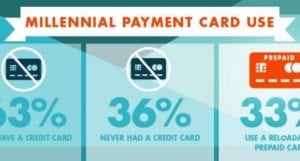Note: Information in this article should is not, and should be construed as, legal advice. If you have any legal questions, please consult with a qualified attorney.
In our last post on collections, we discussed how to use debt validation letters, to force collectors to offer proof that you (or your client, for our friends in the real estate, lending and insurance worlds), in fact owes a debt. Now, let’s assume that such proof has been provided, or you/your client believe that you do owe a debt, and would just like to settle it. Ideally, you’d like to do this in the manner that is most beneficial to your credit reports.
One of the most effective strategies to remove negative items from your credit report, is to offer to pay off all or part of a collection, in exchange for the collection being deleted from a credit report, that is, no longer reported to credit bureaus. Since a credit report is a real-time look at your credit, if an item is deleted, a creditor will have no idea that this collection once appeared on your reports.
Often, to have a collection deleted from a credit report, a collector is going to want a larger settlement amount, than if the collection were simply marked as “paid.” Collectors understand that having a credit item no longer reporting to credit bureaus, is of value in raising credit scores, and so they are often going to demand a little bit more money. It’s typically worthwhile to pay this amount, given the damage that collections do on credit reports.
It is also important to remember that any pay for delete agreement, must be in writing. Collectors often promise to delete a debt, in exchange for payment, or to enter into other agreements, but later forget, or try to back out of, the promise which they made. A written agreement, however, provides a legal basis on which a collector can be sued (or threatened with a lawsuit), if they don’t follow through on their end of the bargain.
In some cases, creditors will not be willing to accept pay for delete, because of a legal agreement they’ve signed with the credit bureaus, to not engage in this practice. Why do credit bureaus so often require this? Despite the numerous inaccuracies on credit reports, credit bureaus believe that the deletion of negative credit items, makes a credit report somehow less accurate, and so they want these items to remain. Either way, collectors risk being sued (or not allowed to work with credit bureaus anymore, which reduces their ability to pressure you into payment), and as a result, many collectors will not agree to pay for delete.
What do you do if a collector will not agree to pay for delete? Not a problem! You then move along to our third strategy, discussed in our next piece: Settle & Dispute. In the meantime, we’d like to know: Have any of you tried out pay for delete? If so, how did it work out for you?
Shiva Bhaskar is an experienced consumer credit attorney, and the cofounder of Tier One Credit (www.tieronecredit.com), a credit consulting firm dedicated to helping every American enjoy the best credit score possible. Shiva can be reached by email at [email protected].



